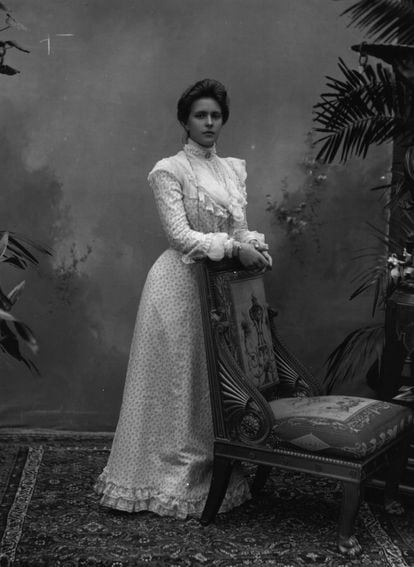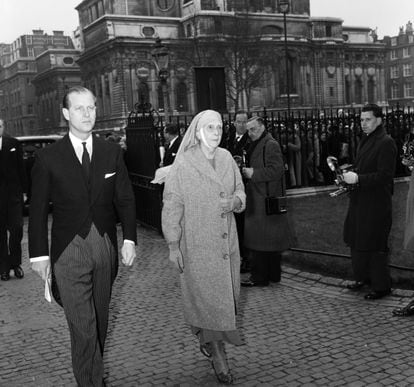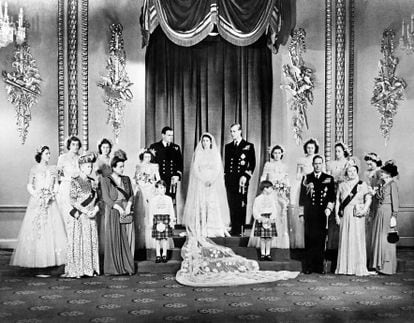Princess Alice of Battenberg: the incredible true story of Prince Philip’s mother
The life of the royal, who was born with congenital deafness, diagnosed with schizophrenia and helped rescue Jews from Nazis, has recently been featured Netflix drama ‘The Crown’
/cloudfront-eu-central-1.images.arcpublishing.com/prisa/IRFKFJGKXBEGFLMQIWNSRDHCUQ.jpg)
She was born with congenital deafness, diagnosed with schizophrenia, committed to a sanatorium, she rescued Jews from the Nazis (despite her daughters being married to high-ranking members of the Nazi Party) and founded her own religious order of nuns. The life of Princess Alice of Battenberg is an embodiment of the old saying that truth is sometimes stranger than fiction. The mother of Prince Philip, Duke of Edinburgh, who died on April 9 aged 99, makes her first appearance halfway through the award-winning Netflix drama The Crown and could easily be the subject for an entire series of her own.

The fourth episode of season three focuses on the inner traumas and insecurities the husband of Queen Elizabeth II harbored in his complicated relationship with his mother, who is portrayed in The Crown by English actress Jane Lapotaire. With a certain amount of creative license, the story picks up on the life of this largely unknown royal figure when she is attempting to sell a sapphire brooch in Athens to raise funds for her congregation. After the 1967 military coup in Greece, Alice of Battenberg moved into Buckingham Palace, in the fictional version occupying a small attic room where she shared cigarettes and secrets with her granddaughter, Princess Anne. “She ran her own religious order and was always seeking funding. She sold the majority of her possessions and, in times of war, she gave her food rations to orphans or anybody else who needed them,” says historian Hugh Vickers in his book, The Crown Dissected, a historical analysis of the first three seasons of the series.
“She did move into Buckingham Palace in 1967, but she wasn’t installed in a sad little room as The Crown suggests, instead she occupied a spacious apartment with views on the first floor. It is true that she was close to Princess Anne, with whom she developed a very personal relationship.” However, it is not true that she was the focus of a feature in the British daily The Guardian. “That’s ridiculous. She was a very private person. She didn’t give interviews. She was so reserved that she destroyed all her letters and, when she died, she only left three dresses,” Vickers told the British newspaper The Times.

Princess Alice of Battenberg was born at Windsor Castle in 1885 in the presence of her great-grandmother, Queen Victoria. She was married at the age of 18 to Prince Andrew of Greece and Denmark, with whom she had five children: four daughters and a son, Philip, who would later become consort to Elizabeth II. In 1922, when Philip was still an infant, the family were exiled from Greece and they swiftly became separated. Philip was educated at boarding schools in England and Scotland, while his father lived by his own means in Monte Carlo and Alice was interned at a Swiss sanatorium after being diagnosed with paranoid schizophrenia. Further complicating family reunions, Alice and Andrew’s four daughters married into the German nobility, some of their husbands being fervent supporters of National Socialism, while Philip was joined the British Royal Navy.
In 1930, Princess Alice was put through the wringer by the experiments of Sigmund Freud. A 2012 documentary, The Queen’s Mother in Law, explained how the father of psychoanalysis diagnosed all of Alice’s problems as being down to her hormone levels and “sexual frustration.” Freud prescribed a course of X-rays to be applied to her ovaries to accelerate the menopausal process. The treatment was a failure and only served to condemn her to lifelong health problems. She fled the sanatorium and returned to Greece, where she founded an orthodox convent. Like something from a Greek tragedy, she was only reunited with her family in 1937 when they all attended the funeral of her daughter Princess Cecilie, who died with her husband and two sons in an airplane accident in Belgium on her way to attend her brother-in-law Prince Ludwig’s wedding in London.

Rebecca Cope says in an article for Tatler that during World War II, Princess Alice worked for the Red Cross. She certainly had experience in the area. During the Balkan Wars of 1912-13, she had served as a nurse, setting up field hospitals and assisting surgeries on wounded soldiers. During the occupation of Athens by Italian and German forces, she helped to hide a Jewish family, the Cohens, who in 1913 had helped members of King George I’s family escape into exile. From that moment on, Alice became fully committed to charitable and humanitarian work through her convent, the Christian Sisterhood of Martha and Mary, which she founded in 1949. A profoundly spiritual and religious person, she took an interest in various doctrines throughout her life. She attended the royal wedding of Philip and Elizabeth and her daughter-in-law’s coronation in 1953, arriving at the latter dressed in the nun’s habit of her order. She also had the engagement ring that Philip used to propose to the future Queen Elizabeth II made from the few jewels she had not sold during the 1940s.
Princess Alice of Battenberg was exiled from Greece again in 1967 in the aftermath of the Greek junta and lived at Buckingham Palace with her son and daughter-in-law until her death in 1969.
English version by Rob Train.
/cloudfront-eu-central-1.images.arcpublishing.com/prisa/T5FM4TNZERHAXFHZVL75SDGHJ4.jpg)
/cloudfront-eu-central-1.images.arcpublishing.com/prisa/ZU4YP3ERIFDOFEOLHWUXCZRBPU.jpg)










































